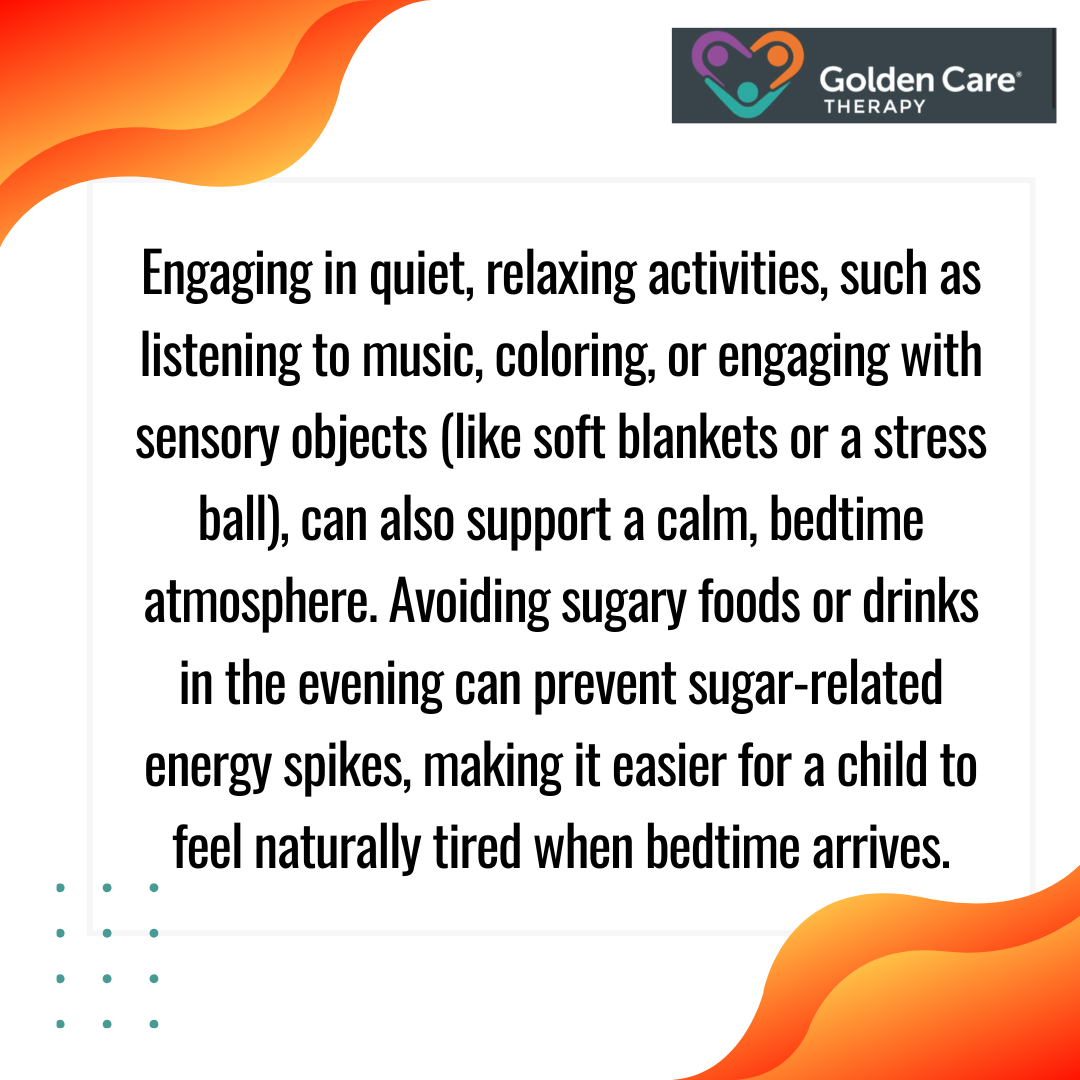Getting ready for bedtime can sometimes feel like a challenge, especially for children with autism. The transition from the day’s activities to a calm, restful night isn’t always easy, and certain bedtime routines can help make this shift smoother.
With just a few thoughtful adjustments, parents and caregivers can create a calming bedtime experience that respects each child’s unique needs and helps them wind down.
These autism-friendly bedtime tips can help make evenings more relaxed and comforting for everyone.
Why Bedtime Can Be Challenging for Autistic Children
Children on the autism spectrum can experience heightened sensitivities and stressors throughout the day that make winding down at night difficult. Factors like sensory overload, rigid thinking patterns, and the struggle with adjusting to new routines can make bedtime a challenge.
Additionally, certain sleep disorders, such as insomnia or irregular sleep-wake patterns, can be more prevalent in autistic individuals. Sensory sensitivities may also contribute; a child may be sensitive to the texture of bedding, the brightness of a nightlight, or even the faintest background noises.
Recognizing these potential challenges is the first step toward developing an autism-friendly bedtime routine. By working with, rather than against, a child’s unique needs and preferences, bedtime can become a time for bonding and a smoother transition into sleep.
Creating a Consistent Bedtime Routine
Consistency is key for many children with autism, and bedtime is no exception. A consistent and predictable bedtime routine can help a child feel more secure and understand what to expect each night.
Establishing the same series of steps can reinforce a sense of calm and routine. Visual supports, like a schedule with pictures, can be especially helpful for children who are visual learners.
An effective bedtime routine often begins at least an hour before the child is expected to go to sleep. Keeping activities low-key during this time can help reduce stimulation.
Avoiding activities that may be overly stimulating, such as screen time or active play, can help signal to the child’s brain and body that it’s time to wind down.
Bedding and Clothing
For some children, the texture of pajamas or bedding can greatly affect their ability to sleep comfortably. Soft, breathable fabrics like cotton can reduce irritations that might disrupt sleep.
Weighted blankets are a popular option for many autistic individuals, as the gentle pressure can provide a calming, grounding effect. However, it’s important to observe the child’s comfort with a weighted blanket, as not all children find it soothing.
Proper Lighting
The brightness and type of lighting can also impact a child’s ability to fall asleep. Many autistic children have light sensitivity, and even a faint glow can be enough to prevent them from sleeping.
Experimenting with different types of nightlights may help. Some children may prefer complete darkness, while others feel more secure with a small amount of light. Red or amber-colored lights can also be beneficial, as these colors tend to have a less stimulating effect on the brain than blue or white lights.

Sound Control
Ambient noise is another factor that can be a sleep disruptor. Some children may benefit from a white noise machine, which can create a consistent background sound that blocks out sudden noises. Others may prefer silence or gentle nature sounds like rain or ocean waves.
Using earplugs or soundproofing elements can also help control auditory sensitivity for children who are easily startled by sounds.
Calming Activities to Ease the Transition to Sleep
Incorporating calming strategies as part of the bedtime routine can make the transition to sleep easier. Activities that engage the senses in a calming way can help a child wind down and prepare for sleep.
For younger children, bedtime stories with simple language and soft, rhythmic voices can be particularly soothing. Many caregivers find success with storytelling methods that follow a slow, calming pace, helping the child to become drowsy naturally.
For older children, guided breathing exercises or even a short, relaxing yoga routine might help release tension and bring a sense of peace before bed. Progressive muscle relaxation, where the child tenses and then releases different muscle groups, can also be useful.
This technique encourages the body to release built-up tension and promote a sense of calm.
Limiting Stimulation Before Bed
Limiting stimulating activities before bedtime is critical for promoting restful sleep. Electronic devices like tablets, phones, and televisions emit blue light, which can disrupt the body’s natural sleep-wake cycle. Many experts recommend ending screen time at least one hour before bed.
Additionally, switching to dim lighting and using a soft voice can create an environment that signals the brain to start winding down.

Adjusting Bedtime Expectations and Being Patient
Sleep patterns may vary significantly for children on the autism spectrum, and it’s essential to be flexible and adjust bedtime expectations based on the child’s natural rhythm.
Some children may take longer to fall asleep, while others may experience frequent waking. Adopting a patient approach, rather than trying to enforce a strict “lights-out” policy, can often yield better results in the long run.
It can also be helpful to track sleep patterns over a few weeks to identify any noticeable trends or triggers. This tracking can reveal patterns in the child’s sleep behavior, such as waking up around the same time each night, and can help caregivers make informed adjustments to the bedtime routine.
Maintaining Realistic Expectations and Flexibility
Finally, parents and caregivers should maintain realistic expectations and understand that achieving an ideal bedtime routine may take time. Each child’s sleep needs and preferences are different, and there may be periods of trial and error as parents discover what works best for their child.
The goal is to create a bedtime environment that feels safe, calming, and predictable for the child. As you adapt routines and strategies based on their needs, it’s likely that the child will begin to experience greater comfort and security at bedtime.
Over time, both the child and their caregivers can enjoy the benefits of a more restful and fulfilling night’s sleep. At Golden Care Therapy, we’re committed to providing high-quality ABA therapy tailored to meet the unique needs of each child and family. If you’re looking for autism services in New Jersey, reach out to us to discover how we can help create a personalized approach that fosters growth and well-being.
Don’t hesitate to contact us today to learn more about our compassionate, results-driven support for your loved one.



